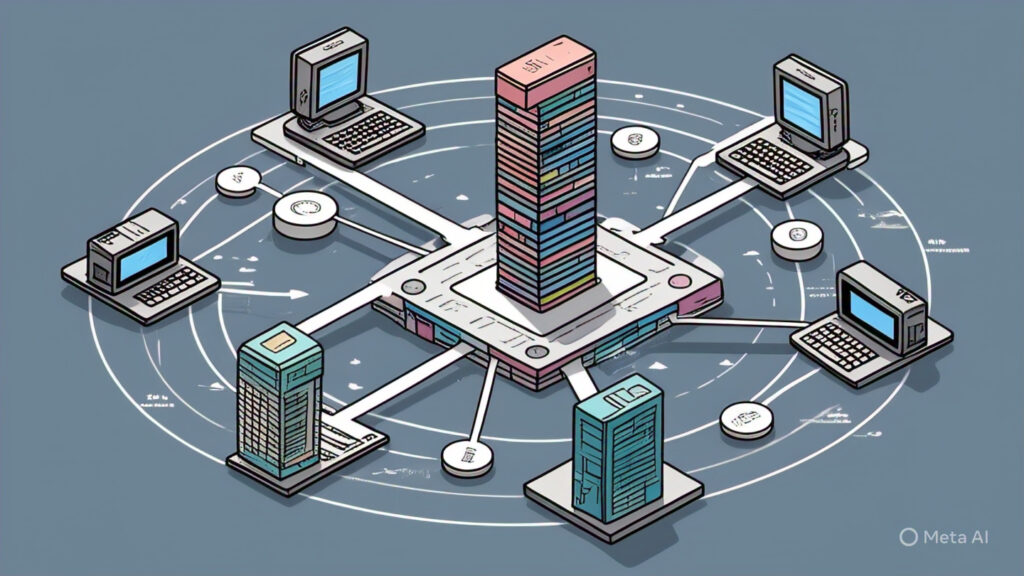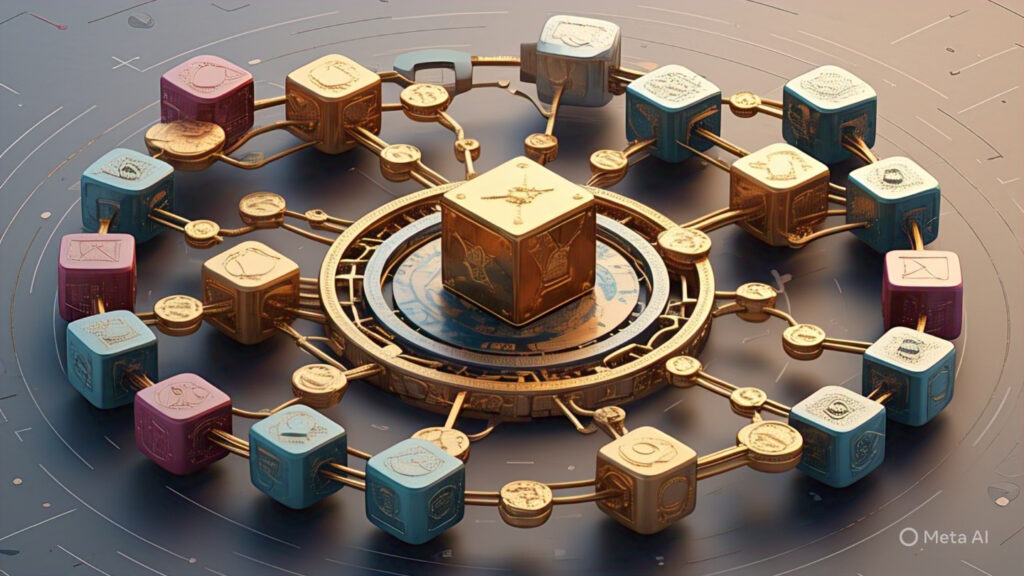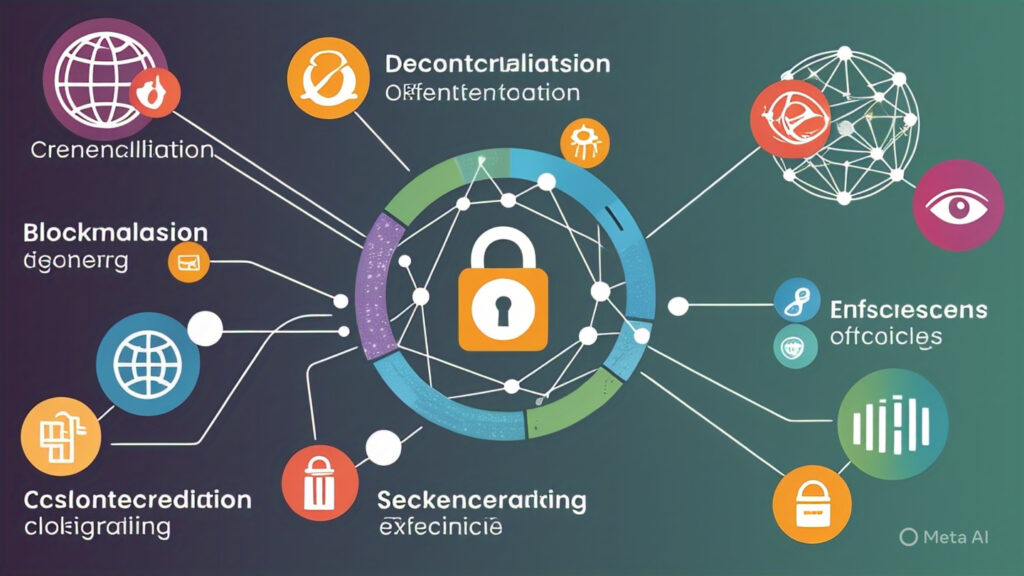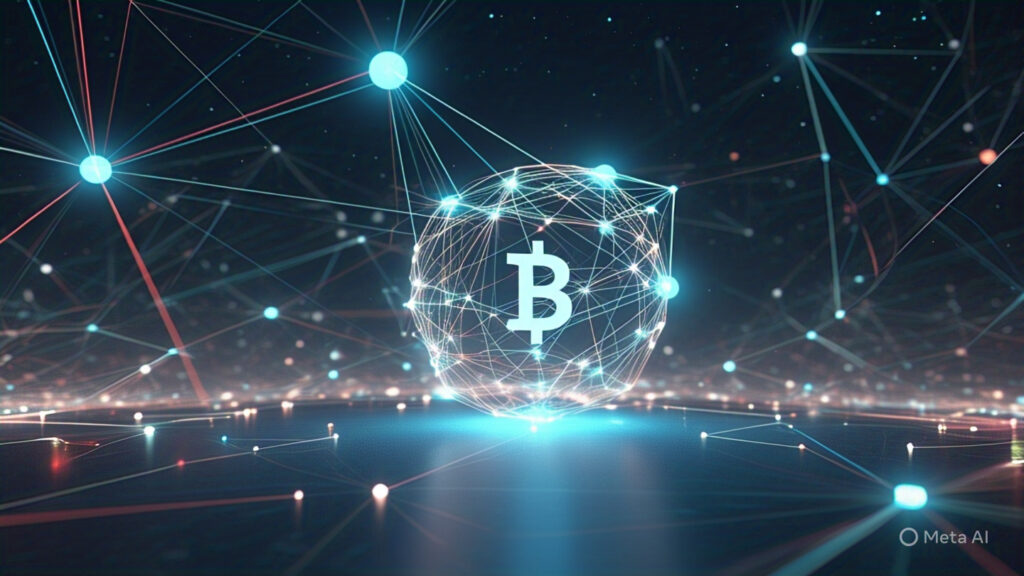Introduction: Unlocking the Mystery Behind the Digital Revolution
You’ve likely heard the term “blockchain” thrown around in conversations about cryptocurrencies like Bitcoin, but what exactly is it? It sounds complex, even intimidating, but at its core, blockchain is a revolutionary technology with the potential to transform various industries far beyond just digital currencies.
Think of blockchain as a digital ledger, a shared and constantly updated record of information that is incredibly secure and transparent. Unlike traditional databases that are stored in one central location and controlled by a single entity, a blockchain is distributed across many computers (nodes) in a network. This decentralization is what makes it so groundbreaking.
This article aims to demystify blockchain technology for beginners, explaining its fundamental concepts in a clear, humanized way, without getting bogged down in overly technical jargon. We’ll explore what makes it so special, how it works, its key characteristics, and its potential applications beyond the world of crypto. By the end of this guide, you’ll have a solid understanding of this transformative technology and why it’s generating so much buzz.

The Core Idea: A Shared, Secure, and Transparent Ledger
Imagine a shared digital notebook that everyone in a group has a copy of. Every time a new entry (a transaction or piece of information) is added, it’s recorded on everyone’s copy simultaneously. This makes it incredibly difficult for any single person to tamper with the record without everyone else noticing. That’s essentially the fundamental idea behind blockchain technology.
At its heart, a blockchain is a distributed ledger technology (DLT). This means the data is not stored in one central server but is spread across a network of computers. This decentralization offers several key advantages:
- Transparency: All transactions or data added to the blockchain are typically public and can be viewed by anyone on the network, fostering transparency and trust.
- Security: Once a block of information is added to the chain, it’s very difficult to alter or delete it because it would require changing the record on the majority of the computers in the network, a practically impossible feat.
- Immutability: The historical record on the blockchain is tamper-proof. Once a transaction is confirmed and added to a block, it becomes a permanent part of the chain.
- Decentralization: No single entity controls the blockchain, eliminating the need for intermediaries and reducing the risk of censorship or single points of failure.
- Efficiency: In many cases, blockchain can streamline processes by removing intermediaries and automating certain tasks through smart contracts (we’ll get to those later).

How Blockchain Works: Building the Chain Block by Block
The term “blockchain” itself provides a clue to how it functions. It’s a chain of blocks, with each block containing a set of verified transactions or data. Here’s a simplified breakdown of the process:
- Transactions or Data are Grouped into Blocks: When a transaction occurs (e.g., someone sends cryptocurrency, a vote is cast, a medical record is updated), it’s bundled together with other similar transactions or pieces of data into a “block.”
- Verification by the Network: This new block of transactions is then broadcast to the entire network of computers participating in the blockchain (these are often called “nodes” or “miners,” depending on the specific blockchain). These computers verify the legitimacy of the transactions within the block. The verification process often involves solving complex mathematical problems (in the case of “proof-of-work” blockchains like Bitcoin) or other consensus mechanisms.
- Adding the Block to the Chain: Once the transactions in a block are verified by the network, the block is added to the end of the existing chain of blocks. This addition is permanent and cannot be altered.
- Securing the Chain with Cryptography: Each new block contains a unique “hash,” which is like a digital fingerprint of the block’s data, as well as the hash of the previous block. This cryptographic linking is what makes the chain so secure. If someone tries to tamper with a previous block, its hash would change, and the link to all subsequent blocks would be broken, making the tampering immediately obvious to the network.
Think of it like a digital train where each carriage (block) is linked to the one before it. Each carriage contains verified cargo (transactions), and each link is a unique, unbreakable seal (cryptographic hash). If someone tries to open a carriage and change the cargo, the seal breaks, and everyone knows it’s been tampered with.

Key Characteristics of Blockchain Technology: What Makes it Special?
Beyond its basic functionality, blockchain technology possesses several key characteristics that contribute to its transformative potential:
- Decentralization: As mentioned earlier, the data is distributed across a network, eliminating single points of control and failure.
- Transparency: While the identities of participants in a blockchain network may be pseudonymous, the transactions themselves are often public and auditable.
- Immutability: Once data is recorded on the blockchain, it’s extremely difficult to change or delete, creating a permanent and trustworthy record.
- Security: Cryptographic hashing and consensus mechanisms ensure the integrity and security of the data stored on the blockchain.
- Efficiency: By removing intermediaries and automating processes through smart contracts, blockchain can often lead to faster and more efficient transactions.
- Trustlessness (Reduced Trust): The inherent transparency and security of blockchain reduce the need for trust in central authorities. Participants can trust the system itself.

The Building Blocks: Understanding Key Blockchain Concepts
To truly grasp blockchain technology, it’s helpful to understand a few core concepts:
1. Nodes: The Network Participants
A node is any computer or device participating in the blockchain network. Nodes hold a copy of the blockchain and help to verify and validate transactions.

2. Miners (in Proof-of-Work Systems): The Verifiers and Block Creators
In certain types of blockchains, like Bitcoin, miners are nodes that use specialized hardware to solve complex mathematical problems to verify transactions and add new blocks to the blockchain. As a reward for their work, miners receive newly minted cryptocurrency.

3. Consensus Mechanisms: Reaching Agreement
A consensus mechanism is a method used by the nodes in a blockchain network to agree on the validity of transactions and the order in which new blocks are added to the chain. Different blockchains use different consensus mechanisms, each with its own trade-offs in terms of speed, security, and energy consumption. Examples include:
- Proof-of-Work (PoW): Used by Bitcoin, where miners compete to solve complex puzzles.
- Proof-of-Stake (PoS): Used by many newer blockchains, where validators are chosen based on the amount of cryptocurrency they “stake” or lock up.

4. Smart Contracts: Code is Law
Smart contracts are self-executing contracts with the terms of the agreement directly written into code. They are stored on the blockchain and automatically execute when predefined conditions are met, without the need for intermediaries. Ethereum is a prominent blockchain that heavily utilizes smart contracts.
Analogy: Imagine a digital vending machine. You put in the correct amount of money, and the machine automatically dispenses the product. Smart contracts work similarly – once the conditions are met (e.g., funds are sent), the agreed-upon action is automatically executed.

5. Hash: The Digital Fingerprint
A hash is a unique, fixed-size code that represents a block of data. Even a small change in the data will result in a completely different hash. This cryptographic fingerprint is used to ensure the integrity of the data on the blockchain.

Beyond Cryptocurrency: The Vast Potential of Blockchain Technology
While blockchain gained prominence through cryptocurrencies, its applications extend far beyond digital currencies. Its ability to create secure, transparent, and immutable records has the potential to revolutionize various industries:
- Supply Chain Management: Tracking goods and verifying their authenticity as they move through complex supply chains.
- Healthcare: Securely storing and sharing medical records, improving data privacy and interoperability.
- Voting Systems: Creating more transparent and secure digital voting processes.
- Digital Identity: Providing individuals with secure and self-sovereign digital identities.
- Intellectual Property Protection: Timestamping and tracking ownership of digital assets and intellectual property.
- Real Estate: Streamlining property transactions and creating transparent ownership records.
- Logistics and Shipping: Tracking shipments and managing documentation more efficiently.
- Digital Rights Management: Controlling access to and usage of digital content.

The Challenges and the Future of Blockchain Technology
Despite its immense potential, blockchain technology still faces certain challenges:
- Scalability: Some blockchains struggle to process a high volume of transactions quickly and efficiently.
- Energy Consumption: Certain consensus mechanisms, like Proof-of-Work, can be energy-intensive.
- Regulation: The regulatory landscape for blockchain technology is still evolving and can create uncertainty.
- Complexity: Understanding and implementing blockchain solutions can be complex.
- Data Privacy Concerns: While transactions are often transparent, ensuring the privacy of sensitive data stored on a public blockchain can be a challenge.
However, ongoing research and development are addressing these challenges, with new solutions and advancements constantly emerging. The future of blockchain technology looks promising, with the potential to underpin a more transparent, secure, and efficient digital world.

Conclusion: Understanding the Foundation of a Digital Revolution
Blockchain technology, while often associated with cryptocurrencies, is a powerful and versatile innovation with the potential to disrupt numerous industries. By understanding its core principles – a shared, secure, and transparent ledger built on a chain of blocks – you gain insight into the foundation of a significant digital revolution.
As blockchain technology continues to evolve and mature, its impact on our lives and the way we interact with the digital world is likely to grow. By grasping the basics now, you’ll be better equipped to understand and participate in this transformative technology and its exciting future applications. The chain of innovation has just begun.



